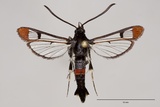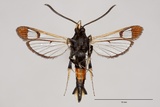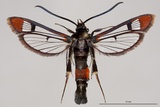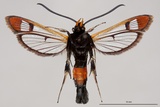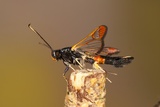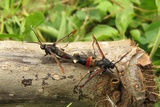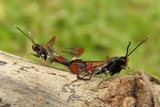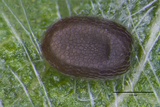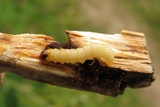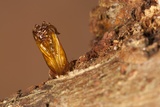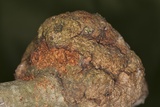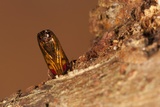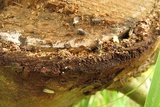Synanthedon formicaeformis (Esper, 1783) Species
Last modified: May 16, 2024, 10:55 a.m.
S. formicaeformis is a very common species throughout Belgium.
This species is considered Least Concern according to the IUCN Red List category for Flanders 2023.
Details
- Classification
- Family: Sesiidae > Subfamily: Sesiinae > Tribus: Synanthedonini > Genus: Synanthedon > Species: Synanthedon formicaeformis
- Vernacular names
- Wilgenwespvlinder (NL), Red-tipped Clearwing (EN), Sésie fourmi (FR), Weiden-Glasflügler (DE)
- First mention in Belgium
- De Sélys-Longchamps E. 1857a. Catalogue des Insectes Lépidoptères de la Belgique. — Annales de la Société entomologique belge 1: 1–111. On page 36 (as S.[esia] Formicaeformis). view page
- Status
-
Native
Distribution
Imago
S. formicaeformis is a rather small species (14–24 mm). The bright red wingtips, the large transparent areas on the forewings and the single red band on the abdomen make this species easily recognised. The proboscis, as in all species of this genus, is well developed and functional.
The males are readily attracted to the pheromone developed for this species and are best lured in early afternoon, although the optimal time span is very weather dependent.
Mine
In most cases only short galleries are constructed.
Cocoon/pupa
The cocoon is constructed from silk and small gnawed plant-particles. The pupa itself is yellow-brown to red-brown and has an upwardly oriented bicuspid outgrowth on the head. This horn is more pronounced than in S. flaviventris and S. spuleri, both species also living in Salix* spp.
Bionomics
The eggs are sometimes deposited on a twig of the hostplant, but in most cases they are laid near damaged parts of the trunk or twigs. The females appear to prefer cankerous swellings, both on trunks and twigs, for ovipositing. These often very irregularly formed swellings are in caused mainly by Agrobacterium tumefasciens, a soil bacterium. Here, the larvae live in rather short galleries between dead and living parts of this so called 'crown gall'. Occasionally, when there is no living tissue available anymore in smaller galls on branches or twigs, the larvae leave the gall and make longer galleries in the twig. Often the galls show traces of pecking caused by birds, by various tit species or sometimes woodpeckers.
After the hibernation within the gallery, the caterpillars construct an exit gallery to the surface of the bark, leaving a thin cap as a separation with the outside world. Parasitism by flies (mostly Tachinidae) or wasps (mostly Ichneumonidae) can be considerable.
Pupation takes place in a cocoon made from gnawed plant particles spun together. On hatching, the pupa works its way out through the cocoon and the remaining thin layer of bark . At the relative low altitudes in Belgium, development is always completed in one year.
Flight periods
The adults fly from May till the end of August. Occasionally, a few specimens can still be observed at the beginning of September.
Observed on
- Host plant (genera):
- Salix
The larva develops inside the trunks, stems, branches and twigs of various Salix species.
Habitat
S. formicaeformis occurs in most places, especially near water, where Salix spp. occur.
